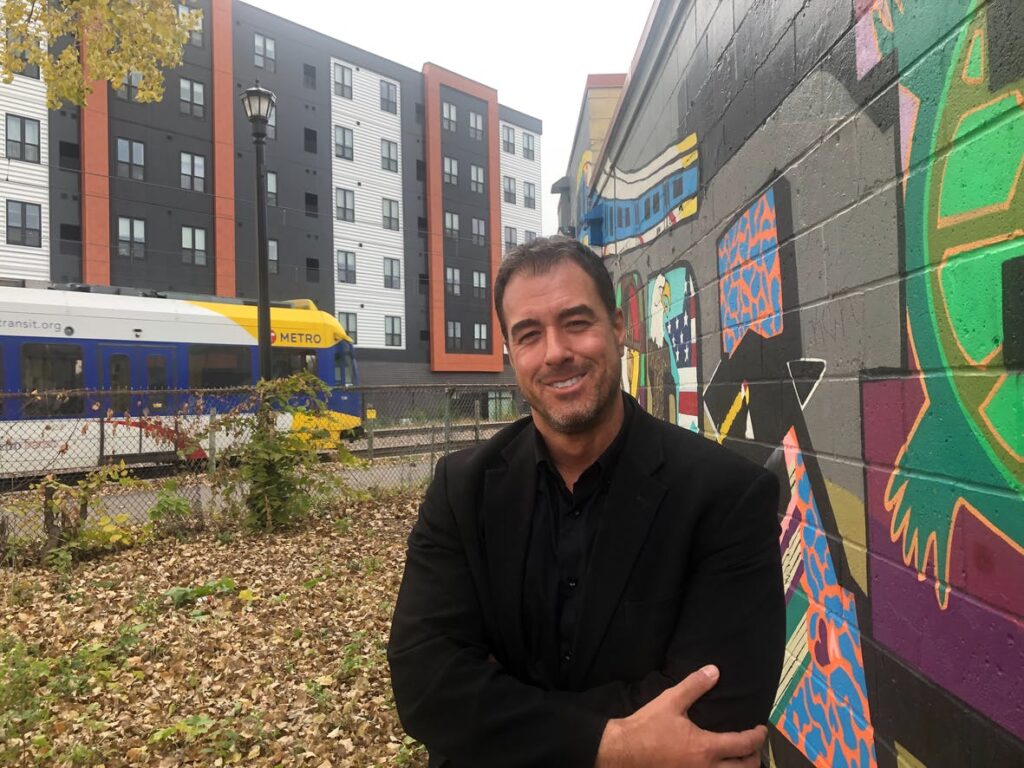NOVEMBER 12, 2021 — 7:00AM
Neal St. Anthony, Star Tribune

Veteran CEO Joe Hobot of the American Indian Opportunities Industrialization Center plans to break ground in 2023 on a $35 million facility to replace the80-year-old former warehouse that the nonprofit has owned since the 1980s.
“There’s a lot of spit, grit and duct tape holding this place together,” Hobot said last week at the center, at the intersection of E. Franklin and Cedar avenues.
“Despite our success, this facility inhibits our impact,” he said.
The AIOIC is among organizations improving the achievement gap for students of color, he said.
With a staff of 40, the center works with up to 1,000 students annually on programs from a three-week certification in warehouse operations to lengthier training for IT support, construction and medical office careers. It also provides adult basic education degrees and a small high school for mostly Indian youth operated through Minneapolis Public Schools.

The center each year then helps hundreds of its students, mostly American Indians and other people of color, secure jobs that pay $18 an hour or more. The $3.1 million operation is funded through government contracts and philanthropy.
The AIOIC is a capital-thin operation that has demand to grow from employers and students. The center and other Indigenous organizations typically turn first to local and state governments for capital, which they often use as matching grants to help attract private capital.
That has sometimes pitted one nonprofit against another.
Hobot, 44, a dynamic extrovert, is the strategist and consensus leader behind the Urban Indigenous Legacy Initiative that will be announced this week in St. Paul. It has brought together over the past three years 16 Indian organizations in the Native American Corridor from E. Franklin to St. Paul to mutually coordinate capital projects.
The goal is to earn $94 million in state bonding and some federal recovery funds that will move through the State Capitol during the 2022 legislative session.
Hobot was involved in a somewhat successful try for $19 million on behalf of a smaller coalition during the pandemic-interrupted 2020 state bonding session. That collaborative approach got a thumbs up from a bipartisan band of legislators and the Walz administration.
In the past, administrations and legislators would sometimes get confused by seemingly competitive requests from organizations such as the Minneapolis American Indian Center, Native American Community Clinic, Indigenous Peoples Task Force and Migizi Communications.
In 2019, “we started to meet colleagues and said, first, let’s not get in a knife fight over funding,” Hobot said. “Let’s approach as one community with clear priorities and a plan.”
The consortium identified six “shovel-ready” projects. For example, the Minneapolis American Indian Center (MAIC), just a few blocks from the AIOIC on Franklin and Bloomington avenues, hopes to break ground next spring on a $24 million renovation and expansion of its 1970s leaky-roofed structure.
The center’s executive director, Mary LaGarde, had raised nearly $15 million by early this year. However, the project price went up significantly due to design changes and increases in building material and labor prices this year.
The price tag is now $24 million. LaGarde raised funds from private and public sources for several years to build. Now, the center will likely have to take a short-term loan as well. The coalition backs her bid for increased state assistance.
Nonprofits often turn to state help to inspire other giving for capital projects, the Guthrie Theater among them. The National Norwegian Center (Norway House) broke ground in September on a $19.5 million expansion several blocks west on Franklin from the MAIC, funded in part with $5 million from the state.
The $94 million in state funding sought by the 16 Indian nonprofits to upgrade and expand their facilities over the next few years is not pie in the sky. They have done the heavy lifting already to attract private and foundation support and the backing of local government, which should help their cause with the Legislature in 2022.
Moreover, as Hobot points out, organizations such as Minnesota Indian Women’s Resource Center, Little Earth, American Indian Community Development Center, Migizi Communications, American Indian Family Center, Montessori American Indian Childcare Center and the AIOIC have demonstrated success in their areas. They also have worked together to coordinate programs.
Now they want to have the facilities to help their constituencies even more — at a time when the state has both federal funds and a surplus to administer next year.



